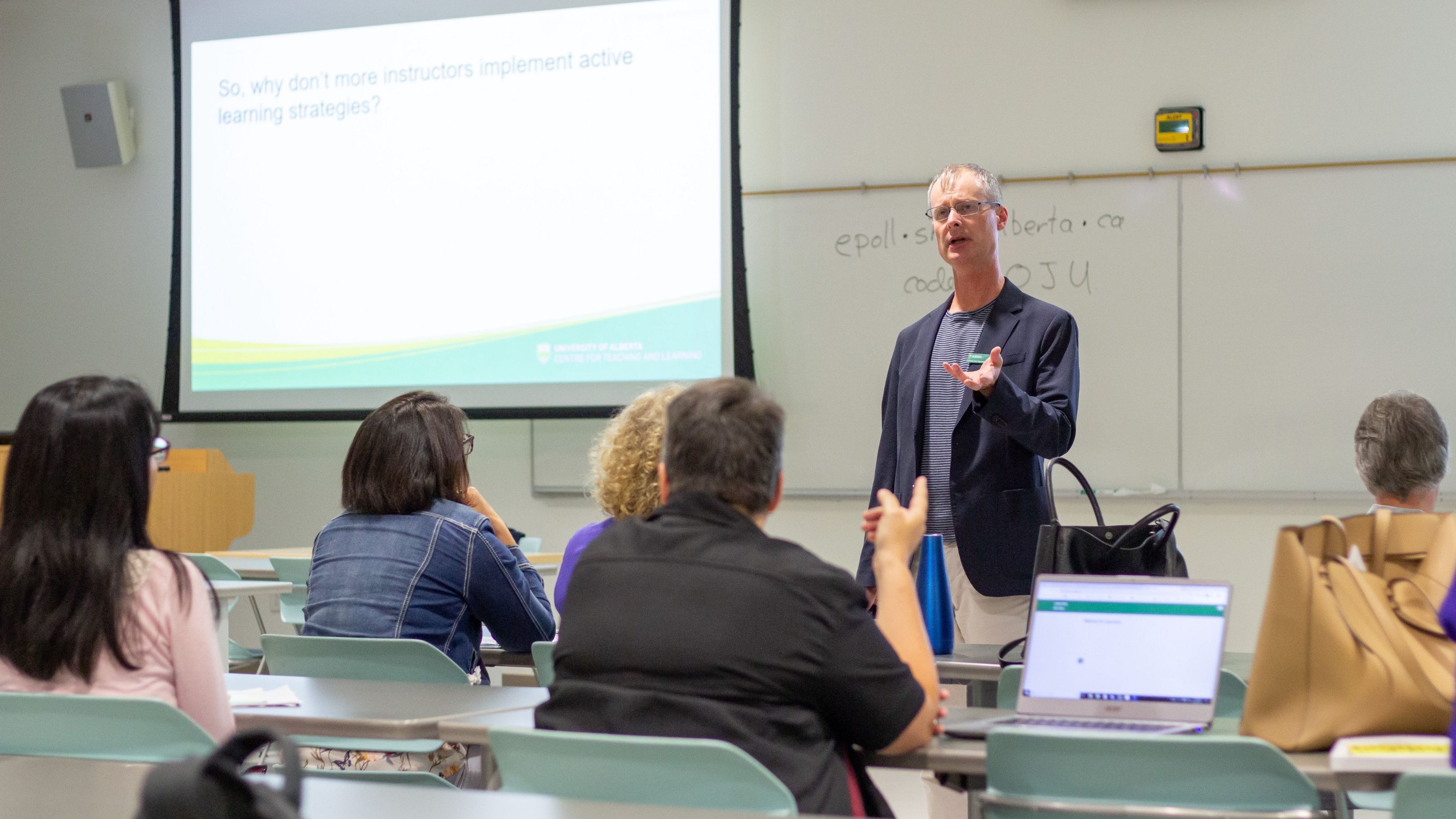There are innumerable ways to be an effective instructor in the craft of university teaching. Each of us has a style and approach to instruction based on (or influenced by) our discipline, experiences in teaching, personality, personal learning preferences, time and energy available for teaching, and student expectations. While the courses, students, technology, and resources change from year to year, there remains an essential and authentic 'you' whom your students will remember. I met an instructor who effectively sang acronyms for key terminology or concepts in the course to students. The students loved it and remembered the acronyms. I myself cannot sing well and my teaching style doesn't lend itself to jazz hands. I have other teaching gifts and skills I cultivate for teaching.
When you are asked to write a Teaching Philosophy Statement, the audience (most commonly either a hiring committee, promotion & tenure committee, or awards committee) is asking you to describe your identity and purpose as an instructor. Who are you when you teach? What is important to you? How do you know if you are achieving what you set out to attain as an instructor?
If these questions sound too lofty or philosophical for your taste, here are some more specific questions to consider as you write your first draft of your philosophy statement:
- What are your expectations for students and how do you communicate those expectations?
- What personal and professional values are reflected in your teaching? How?
- How do you approach your teaching? Are there any authors or theories about learning and teaching which influence your approach?
- How do you engage students in their learning?
- How do you adapt your instruction for different learning contexts such as large first-year sections, graduate courses, labs, seminars, or field study courses?
- How would you describe your relationships with students? Are you strict but fair, friendly and approachable, scared of the students?
- How do you challenge students to think?
- How do you assess if learning has occurred?
- How do you model the skills, values, and attitudes of your profession or discipline?
The Teaching Philosophy Statement is written in the first person (using 'I') because it is a reflective piece of writing supported by reasons and examples from your courses.
Once you have a first draft, consider meeting with an Educational Developer at the Centre for Teaching and Learning or a trusted colleague for a fresh set of eyes and feedback, especially if your discipline does not require you to write reflectively very often (or at all).
Your teaching philosophy statement is a living document that changes as you develop as an instructor, and as you adapt it for specific purposes - an award, promotion, or application for new position, for example.
One of the most anticipated benefits of writing a teaching philosophy statement is that is gives you a renewed or defined sense of purpose in your teaching. I've had many experienced instructors tell me, "I wish I'd done this years ago!"
Do you have an interesting teaching practice you think others would be interested in? Visit the Festival of Teaching and Learning website to learn how you can share your ideas with others at this year's event from May 2-4, 2023.

About Cosette
Cosette Lemelin (PhD, University of Manitoba) is the assistant director of the Centre for Teaching and Learning. She has 18 years of experience in educational developer roles in a 20-year career in adult and post-secondary education at three universities (the University of Winnipeg, the University of Manitoba, and the University of Alberta). She has a Master of Education (2003) and PhD in Education (2016) focusing on adult and post-secondary education. Cosette’s unique specialities include teaching within health professions education (with a focus on clinical practicum teaching and learning) and varying aspects of interpersonal communication in teaching and learning. She is the Chair of the Educational Developers Network of Alberta (EDNA) and on the Board of Directors of the Legal Education Society of Alberta (LESA).
